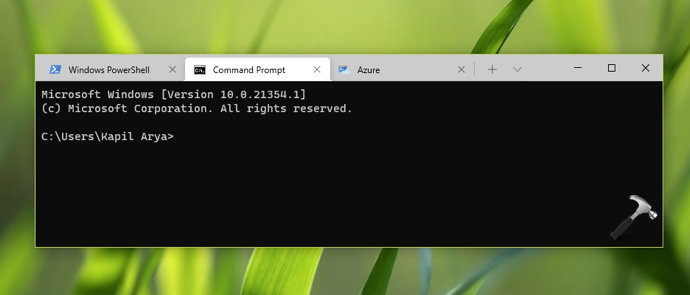
In the GitHub Readme area, you find the.msi files you need for the installation:ĭownload the fitting one and install it on your system. PowerShell Core is available on GitHub (open source and under MIT license): You can check your version by executing the command “ winver” on your system that gives you some output like this:īefore we start configuring the Windows Terminal, we will first install the “successor” of PowerShell namely PowerShell Core.

In addition, it contains a very simple way to configure the look and feel of the different shells on your system.Īttention: The Windows Terminal is available as of Windows 10 Version 18362.0. It serves as your central entry point embracing all the shells on your system (and on Azure – which is not in scope of this blog). The app is free, and you can install it directly from Windows Store: But there is a better way to start your journey: The Windows Terminal app. Windows itself comes with the command prompt and the PowerShell. Step 1 – Install Windows Terminalįirst things first – you need a terminal. The intention of this blog is to give them a solid start to achieve this goal. One might even get the impression that DJ is not the biggest fan of Windows and the options you have there, but maybe I am wrong and one day DJ puts his MacBook aside, switches to a Surface Laptop and enjoys Windows 10 with WSL2 (this would probably be the same day when hell freezes over).Īnyway, I think there are some developers out there who use Windows for their development and they also want to have a cozy terminal environment in Windows 10. However, as far as I have seen most of the tips and tricks focus on MacOS and Linux as this is what is used in the episodes.


So, it makes sense to get some cozy environment there set up for you. I absolutely agree that the focus on the terminal will continue to rise.

Looking at the hands-on SAP Dev episodes (as of 3rd of January 2020 live stream and recordings are available via YouTube) of DJ Adams you will become aware that the terminal is getting quite some attention: how to configure it to fit your needs, what add-ons to install to get work done more efficiently from the command line, what fonts to use and so on.


 0 kommentar(er)
0 kommentar(er)
